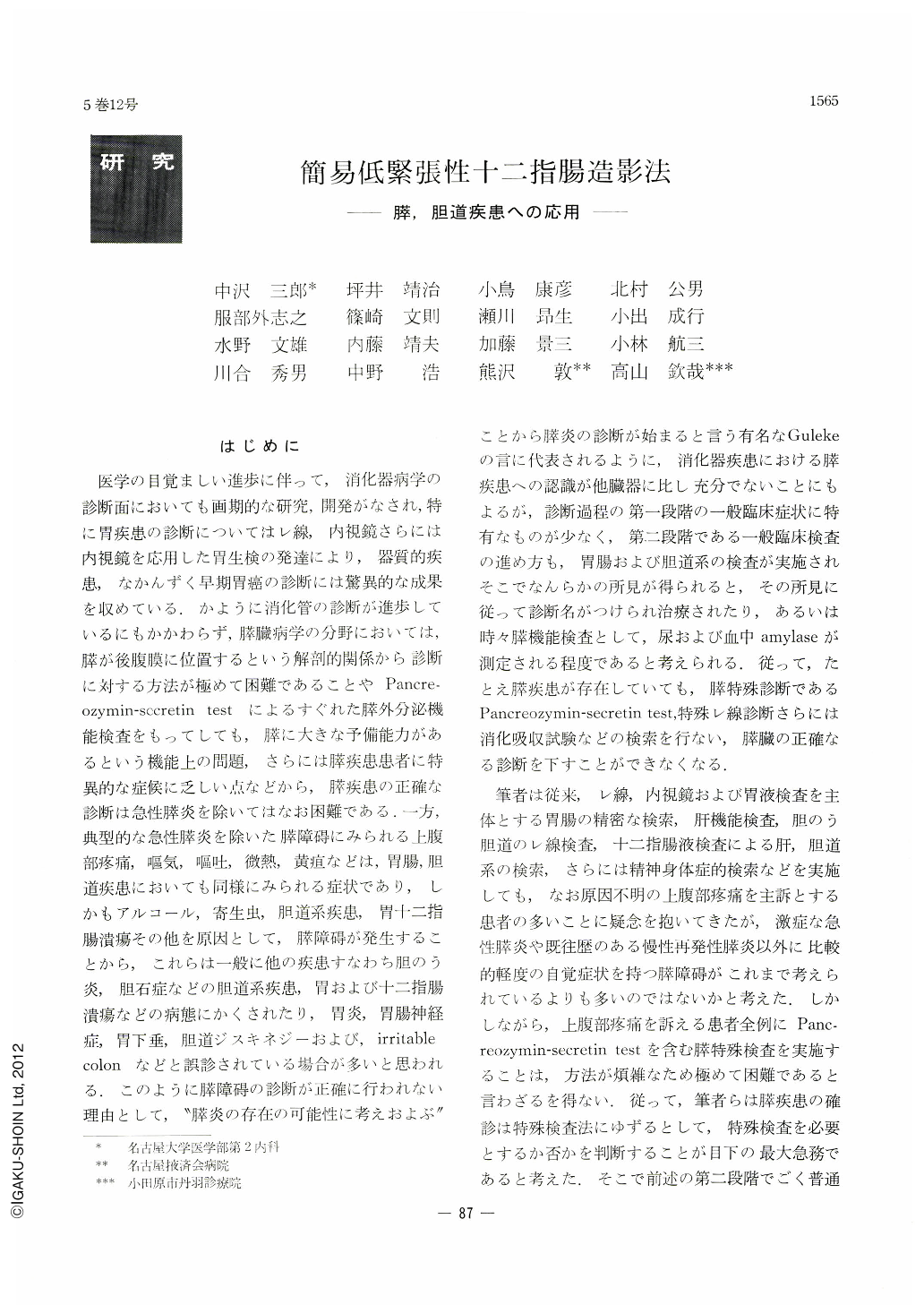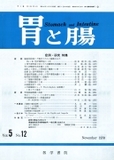Japanese
English
- 有料閲覧
- Abstract 文献概要
- 1ページ目 Look Inside
はじめに
医学の目覚ましい進歩に伴って,消化器病学の診断面においても画期的な研究,開発がなされ,特に胃疾患の診断についてはレ線,内視鏡さらには内視鏡を応用した胃生検の発達により,器質的疾患,なかんずく早期胃癌の診断には驚異的な成果を収めている.かように消化管の診断が進歩しているにもかかわらず,膵臓病学の分野においては,膵が後腹膜に位置するという解剖的関係から診断に対する方法が極めて困難であることやPancreozymin-socretin testによるすぐれた膵外分泌機能検査をもってしても,膵に大きな予備能力があるという機能上の問題,さらには膵疾患患者に特異的な症候に乏しい点などから,膵疾患の正確な診断は急性膵炎を除いてはなお困難である.一方,典型的な急性膵炎を除いた膵障碍にみられる上腹部疼痛,嘔気,嘔吐,微熱,黄疸などは,胃腸,胆道疾患においても同様にみられる症状であり,しかもアルコール,寄生虫,胆道系疾患,胃十二指腸潰瘍その他を原因として,膵障碍が発生することから,これらは一般に他の疾患すなわち胆のう炎,胆石症などの胆道系疾患,胃および十二指腸潰瘍などの病態にかくされたり,胃炎,胃腸神経症,胃下垂,胆道ジスキネジーおよび,irritablecolonなどと誤診されている場合が多いと思われる.このように膵障碍の診断が正確に行われない理由として,“膵炎の存在の可能性に考えおよぶ”ことから膵炎の診断が始まると言う有名なGulekeの言に代表されるように,消化器疾患における膵疾患への認識が他臓器に比し充分でないことにもよるが,診断過程の第一段階の一般臨床症状に特有なものが少なく,第二段階である一般臨床検査の進め方も,胃腸および胆道系の検査が実施されそこでなんらかの所見が得られると,その所見に従って診断名がつけられ治療されたり,あるいは時々膵機能検査として,尿および血中amylaseが測定される程度であると考えられる.従って,たとえ膵疾患が存在していても,膵特殊診断であるPancreozymin-secretin test,特殊レ線診断さらには消化吸収試験などの検索を行ない,膵臓の正確なる診断を下すことができなくなる.
筆者は従来,レ線,内視鏡および胃液検査を主体とする胃腸の精密な検索,肝機能検査,胆のう胆道のレ線検査,十二指腸液検査による肝,胆道系の検索,さらには精神身体症的検索などを実施しても,なお原因不明の上腹部疼痛を主訴とする患者の多いことに疑念を抱いてきたが,激症な急性膵炎や既往歴のある慢性再発性膵炎以外に比較的軽度の自覚症状を持つ膵障碍がこれまで考えられているよりも多いのではないかと考えた.しかしながら,上腹部疼痛を訴える患者全例にPancreozymin-secretin testを含む膵特殊検査を実施することは,方法が煩雑なため極めて困難であると言わざるを得ない.従って,筆者らは膵疾患の確診は特殊検査法にゆずるとして,特殊検査を必要とするか否かを判断することが目下の最大急務であると考えた.そこで前述の第二段階でごく普通に行なわれる胃十二指腸レ線検査に際し,“simplifed hypotonic duodenography”を併用し,これで異常所見の認められた場合に,一週間連続尿amylase,血中amylase,およびPancreozymin-secretin test,その他を実施した結果,本方法の有用性を認めたので報告する.
Hypotonic duodenography, modified into an easy and quite reliable method for the daily examination, seems to contribute to the diagnosis of pancreatic and biliary tract diseases that are recently increasing in number and are drawing many internists' attention.
The method is as follows: After routine barium meal examination of the stomach, double contrast picture of the duodenal loop is taken with air blown into the astomach following administration of anticholinergic durg.
The x-ray pictures taken in this way were classified into the basic groups of A, B, C, D, and E, and into the special groups of F, G and H.
The fresh duodenums from fifty dissections were used to confirm the relation between x-ray findings and pancreatic disorders and fairly relation was observed between abnormal x-ray findings and cell infiltration, fibrosis or abnormality of the pancreatic duct.
Following this observation, the authors checked up 300 clinical cases concerning the correlation between the x-ray findings and the results of urine amylase, pancreozymin-secretin test, etc. It was found that abnormal figures along the inside of descending duodenum and in the vicinity of papilla Vateri were mainly concerned with pancreatic or biliary tract diseases.
In short, simplified hypotonic duodenography is closely related to the diagnosis of disorders in the pancreas and biliary tract and this method is an indispensable approach to the appropriate treatment of patient suffering from epigastric pain.

Copyright © 1970, Igaku-Shoin Ltd. All rights reserved.


